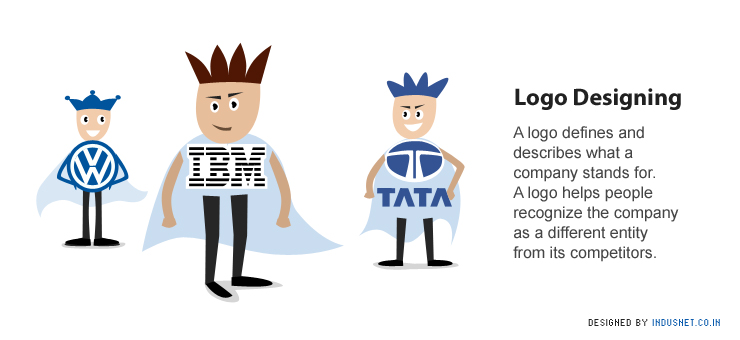
Most designers encounter clients who need logos to be designed for them. Though a logo is a tiny piece of art, it carries more weight than reams of pages.
What Is a Logo?
A logo defines and describes what a company stands for. A logo helps people recognize the company as a different entity from its competitors. It inspires trust, familiarity, loyalty and a certain sense of superiority. It helps define a company as a separate commercial, legal and economic identity which has a place of its own in the world.
The shapes, colors and fonts used to create a logo are always different from every other logo that has been designed. Thus it is no surprise than many companies sue each other when their logos appear similar. While a logo does not directly market or sell, it identifies the company as a commercial entity and its products as being separate from others in the market. One could say, that a logo is a signature of a company.
What Makes a Good Logo?
There are several ways to make sure that a logo is exceptionally good. A good logo has to be graphical in nature, and minimalist. A simple design always attracts and holds more attention than an intricate design that requires greater span of attention. A good logo has to be appropriate for the audience of the company’s products and services. It also has to be distinctive and practical.
Logos may have to be printed on a number of merchandize and thus they have to be simple, accurate and easy to recognize. Any logo that is good has an implicit meaning or a message that is conveyed in a unique unstated manner. Even without colour, a logo should be able to stand on its own just because of its shape. It should be designed in such a manner that it can be replicated in any size that the company wants to. Thus, a good logo comes with a good concept and good execution.
The Process of Logo Designing
Designing a logo cannot take place haphazardly. It requires a certain discipline and the ability to stick to a process.
Logo Designing Principles
While this process is common to all kinds of logos, a logo designer must also bear in mind that the profession of designing logos stands upon certain principles. These principles can be understood in the following manner:
BTW, If you have a logo to be designed, feel free to drop us a line and we will be happy to connect you with our Logo Design team.